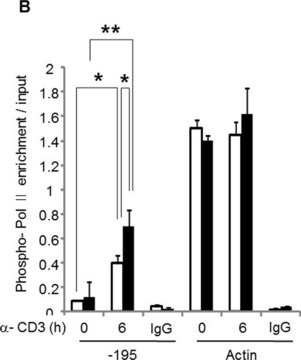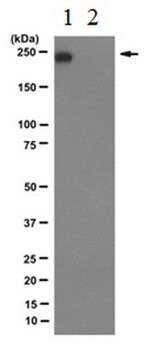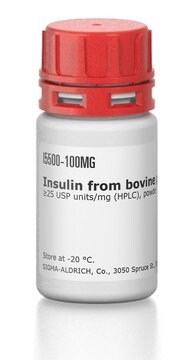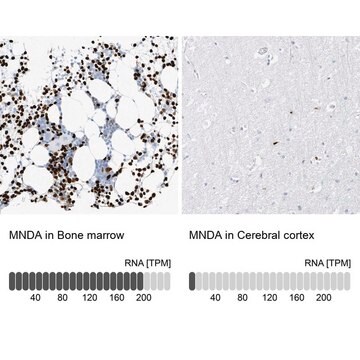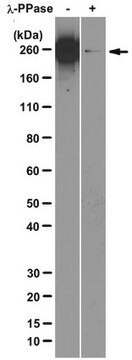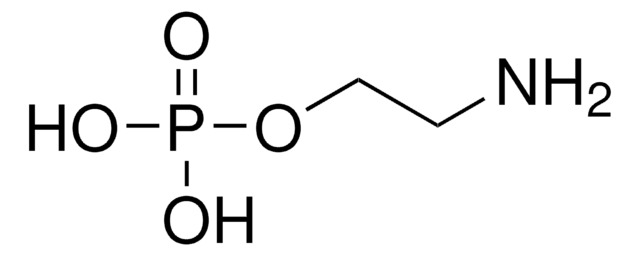Kluczowe dokumenty
SAB4200637
Monoclonal Anti-phospho-RNA polymerase II CTD (pSer2) antibody produced in rat
clone 3E7C7, purified from hybridoma cell culture
Synonim(y):
POLR2, POLRA, RPB1, RPBh1, RPO2, RPOL2, RpIILS, hRPB220, hsRPB1, polymerase (RNA) II (DNA directed) polypeptide A 220kDa (POLR2A)
About This Item
Polecane produkty
pochodzenie biologiczne
rat
Poziom jakości
forma przeciwciała
purified immunoglobulin
rodzaj przeciwciała
primary antibodies
klon
3E7C7, monoclonal
masa cząsteczkowa
~250 kDa
reaktywność gatunkowa
rat, canine, mouse, human, monkey
stężenie
~1 mg/mL
metody
flow cytometry: 10 μg/test using using HeLa cells.
immunoblotting: 0.25-0.5 μg/mL using whole extracts of HeLa cells.
immunofluorescence: 4-8 μg/mL using using A549 cells
izotyp
IgG2a
numer dostępu UniProt
Warunki transportu
dry ice
temp. przechowywania
−20°C
docelowa modyfikacja potranslacyjna
phosphorylation (pSer2)
informacje o genach
human ... POLR2A(5430)
Powiązane kategorie
Opis ogólny
Specyficzność
Immunogen
Zastosowanie
- immunoblotting
- immunofluorescence
- flow cytometry
Działania biochem./fizjol.
Postać fizyczna
Przechowywanie i stabilność
Oświadczenie o zrzeczeniu się odpowiedzialności
Nie możesz znaleźć właściwego produktu?
Wypróbuj nasz Narzędzie selektora produktów.
Kod klasy składowania
10 - Combustible liquids
Klasa zagrożenia wodnego (WGK)
WGK 1
Temperatura zapłonu (°F)
Not applicable
Temperatura zapłonu (°C)
Not applicable
Wybierz jedną z najnowszych wersji:
Certyfikaty analizy (CoA)
Nie widzisz odpowiedniej wersji?
Jeśli potrzebujesz konkretnej wersji, możesz wyszukać konkretny certyfikat według numeru partii lub serii.
Masz już ten produkt?
Dokumenty związane z niedawno zakupionymi produktami zostały zamieszczone w Bibliotece dokumentów.
Nasz zespół naukowców ma doświadczenie we wszystkich obszarach badań, w tym w naukach przyrodniczych, materiałoznawstwie, syntezie chemicznej, chromatografii, analityce i wielu innych dziedzinach.
Skontaktuj się z zespołem ds. pomocy technicznej

